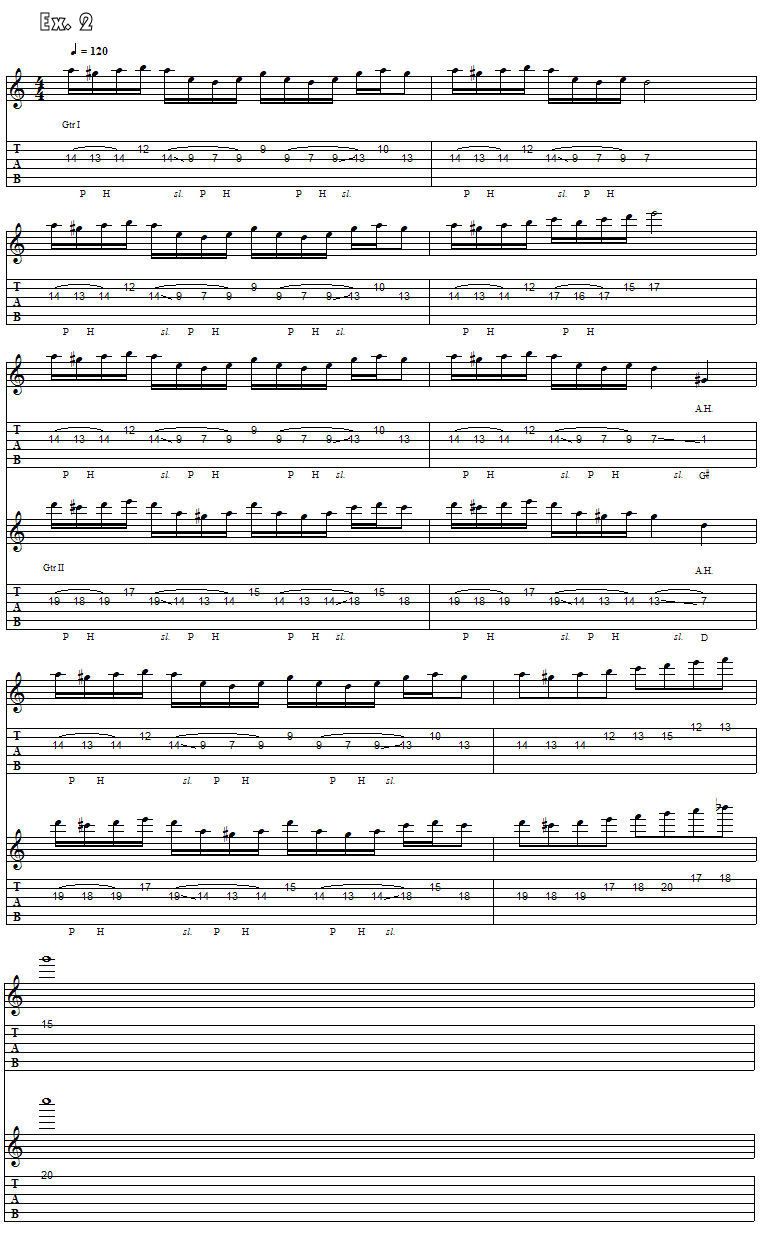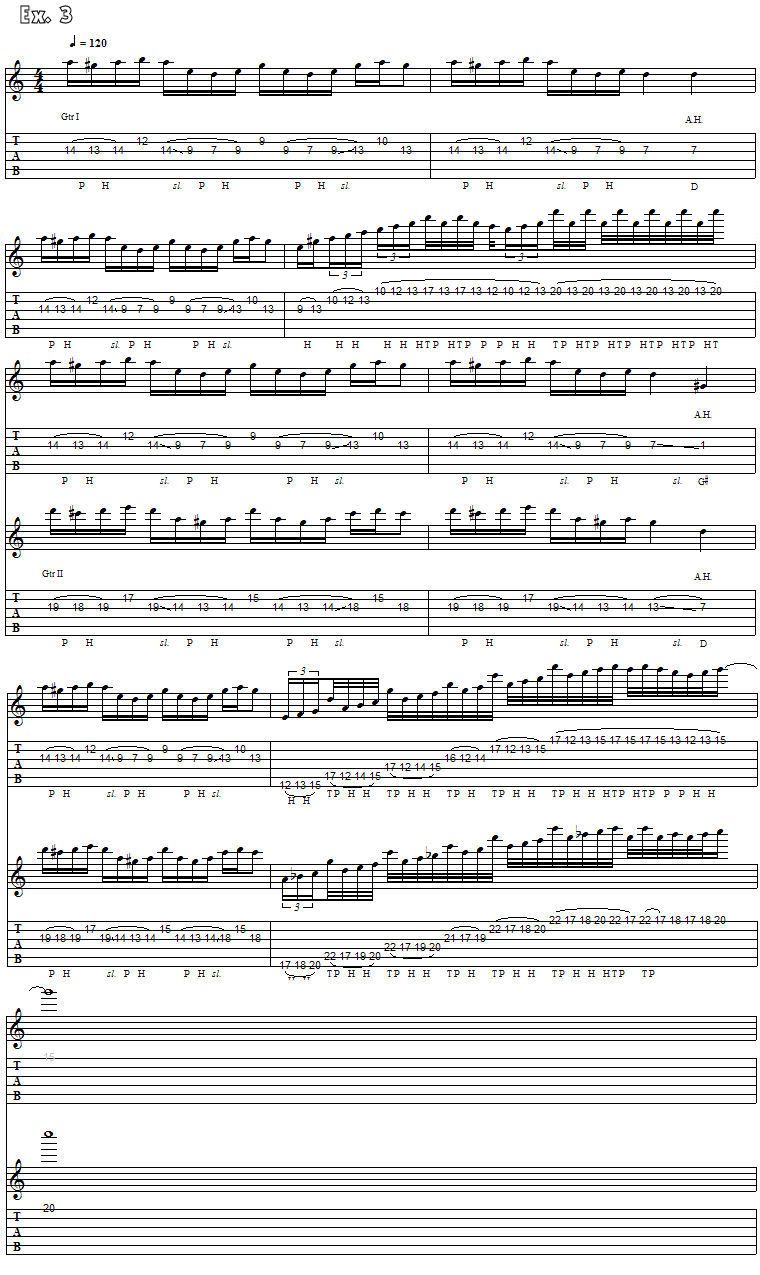One of the most effective tools in keeping a composition interesting is the use of theme and variation. Throughout my years teaching, one of the most common 'mistakes' I came across was students who lacked variety in their compositions. It is one thing to come up with a great riff, lick or melody, but it is something altogether different to be able to develop those ideas so they become a song that will grab the listener and keep his/her attention. This column is going to focus on ideas to help take an interesting musical idea and develop it throughout a piece of music.
To do this I am going to use a musical example from my CD "Orbit" and show you how I took a simple melody as my theme and used variation throughout the song to keep it interesting. This example is from the song "Nail Biter".
The main theme here is based off of the E Phrygian Dominant scale (5th mode of the A Harmonic Minor scale). After composing the main rhythm guitar part, I played around over the changes and came up with this simple melody in Example 1.

MP3 - Example 1
Although happy with the melody, I knew I would have to come up with a number of variations to this theme to keep the interest level high. I ended up with Exampe 2.

MP3 - Example 2
Example 2 begins with the same two measure melody as Example 1. Notice though that the second time through, the main theme changes by moving the melody higher in measure four. This is the first variation on the original theme, and while quite simple, gives the listener a little something different, while also allowing more room to develop the idea a little more the next time through.
As we continue through Example 2, we see the next variation appears in measure six. Once again a very simple change takes place. Instead of just hanging on to the D note for two beats, I now slide down from the D to a G#, holding each for a beat and in the process really emphasizing the Phrygian Dominant sound.
The final variation is seen in measure 8. Since this measure is the final measure before the next section of the song, it needed to lead smoothly into the next part. This was accomplished by doing a simple climb up the Phrygian Dominant scale and into the next section of the arrangement.
Another effective way of preventing the part from becoming stale as the song advances is by introducing a harmony part as can be seen at measure 5. Adding harmonies can be a very effective way of getting a lot of mileage out of a melody while still keeping the listener interested. Later on in the song this theme appears yet again. At this point the decision has to be made whether or not to just keep the part the same and repeat the theme with the same variations. While that would be the easiest thing to do, it probably would not be the most effective in keeping your listener engaged. Also, since the variations on the theme were rather simple the first time through, I wanted an opportunity to add some more exciting and challenging variations the second time through. These can be seen in Example 3.

MP3 - Example 3
Once again things start off with the main theme. Where things really get interesting is in measure 4. Unlike the first time through, these sections where the part basically hung on a simple one note melody, I take advantage of this space to throw in a very fast legato/tapping lick that will hopefully catch the listener off guard and lead directly back into the main theme.
After the first variation, things stay basically the same as Example 2, bringing in the harmony part at measure 5, until the blazing 32nd note legato/tapped run up the E Phrygian Dominant.
So the next time you come up with an interesting riff, lick or melodic figure, try to develop four or five variations based off of it. By changing parts of the rhythm or some of the notes, or by adding harmonies or throwing in some head turning 'shred' type licks (all while staying true to the original theme), you can create entire songs that will keep listeners wanting to hear more.
The song "Nail Biter", which was used for the examples in this column can be found on my CD "Orbit".
Jason Sadites is a guitarist from Canada who has been teaching guitar since the age of 16, and has a consistent roster of between 60-70 students.
His latest CD, "Weve", showcases his strong melodies, tight harmonies and amazing solos over the songs incredible grooves.